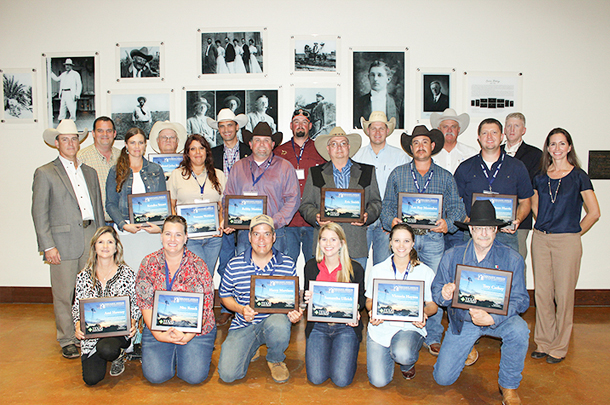The 13th Annual Holt Cat Symposium on Excellence in Ranch Management hosted professionals from the National Cattlemen’s Beef Association (NCBA) and Texas A&M AgriLife Extension, along with board certified veterinarians and ranch managers and owners from diverse operations, who shared their expertise on cattle handling topics.
Keynote and academia presentations
Shawn Darcy, associate director of market research for NCBA, outlined consumer perceptions on production practices and animal welfare. While he noted that nearly two-thirds of consumers recently surveyed felt positive about the way beef is raised, the most concerning topic out of 12 topics surveyed was animal abuse or inhumane treatment. Darcy also explained that consumer concerns and emotions on areas such as foodborne illnesses, inhumane treatment, hormone use and overall suspicions of the beef production cycle decreased after watching a beef life cycle video that portrayed all segments of the beef industry and the steps taken by the industry to ensure the humane treatment of the cattle.
Other speakers on the symposium agenda included KRIRM faculty member, and Paul C. Genho Endowed Chair in Ranch Management, Rick Machen, Ph.D. Machen discussed the impact of stress and handling on cattle performance, explaining that research concludes low-stress handling contributes to animal and handler welfare, improved animal performance, improved carcass merit and greater consumer confidence in the industry. Lee Creech, a KRIRM graduate student, illustrated cost comparisons between large and small facilities. Creech showed attendees how to correctly evaluate the long-term feasibility of rebuilding corrals versus new construction options.
Veterinarian and ranch manager perspectives
Perspectives from two board certified veterinarians also offered further insight into cattle handling topics. Randy Hunter, DVM, advised attendees on the most productive ways to handle cattle, giving tips for controlling the horse, keeping speed to a minimum, entering the pen to help another worker, moving several animals, trailer loading and settling cattle. Bob Smith, DVM, discussed the best management practices for castrating, dehorning and euthanizing, citing BQA guidelines. Smith summarized by advising attendees to consider the cattle’s well-being, employee safety, safety of the beef supply and the impression husbandry practices have on consumers.
Industry professionals shared their knowledge from direct experiences with cattle handling on the ranch. Decky Spiller, division manager for Silver Spur Ranches in Colorado, described how employee education impacts the entire process. He cited 10 guiding principles that employees should adhere to in order for the operation to be sustainable, both fiscally and ecologically. Michael Archibald, general manager for Deseret Cattle & Timber in Florida, shared his experience implementing change in cattle handling. Through employee training, BQA certification, onboarding with new employees and regular meetings, Archibald explained the change in cattle handling resulted in calves settling quicker, a decrease in cattle injuries, employees more committed to improvement and a heightened awareness on cattle handling. Jason Peeler, owner of Texana Feeders in Pleasanton, Texas, shared similar experiences about his success in changing the way cattle are handled in the feedyard.

Low-stress cattle handling demonstration
The symposium concluded on Friday afternoon at a low-stress cattle handling demonstration led by cattle handling experts Ron Gill, Ph.D., and Curt Pate. Both Gill and Pate handled a set of Santa Gertrudis heifers on King Ranch horses, demonstrating the process from acclimating the horse and cattle to the situation, penning the cattle, working the cattle on foot and to finally loading the cattle in a trailer. The overall message during the demonstration was the importance of teaching cattle to trust the handler, respond to pressure and use their instincts to accomplish the intentions of management.
An industry trade show of 28 vendors offered attendees an opportunity to network with agricultural lending and supply/service companies supporting the ranching industry. A prime rib dinner honored 23 individuals who completed the requirements for the Texas Farm Credit Certificate in Advanced Ranch Management. To earn the certificate, the individuals representing six states completed four KRIRM lectureships and two symposia within a three-year period. ![]()
—From at Texas A&M University – Kingsville news release
PHOTO 1: Cattle handling experts Dr. Ron Gill and Curt Pate of Curt Pate Stockmanship led a low-stress cattle-handling demonstration at King Ranch that concluded the symposium.
PHOTO 2: The Texas Farm Credit Certificate in Advanced Ranch Management was awarded to 23 individuals representing six states. The 2016 certificate recipients completed four KRIRM lectureships and two KRIRM symposia within a three-year period to earn the award. Photos courtesy of Texas A&M University – Kingsville.







